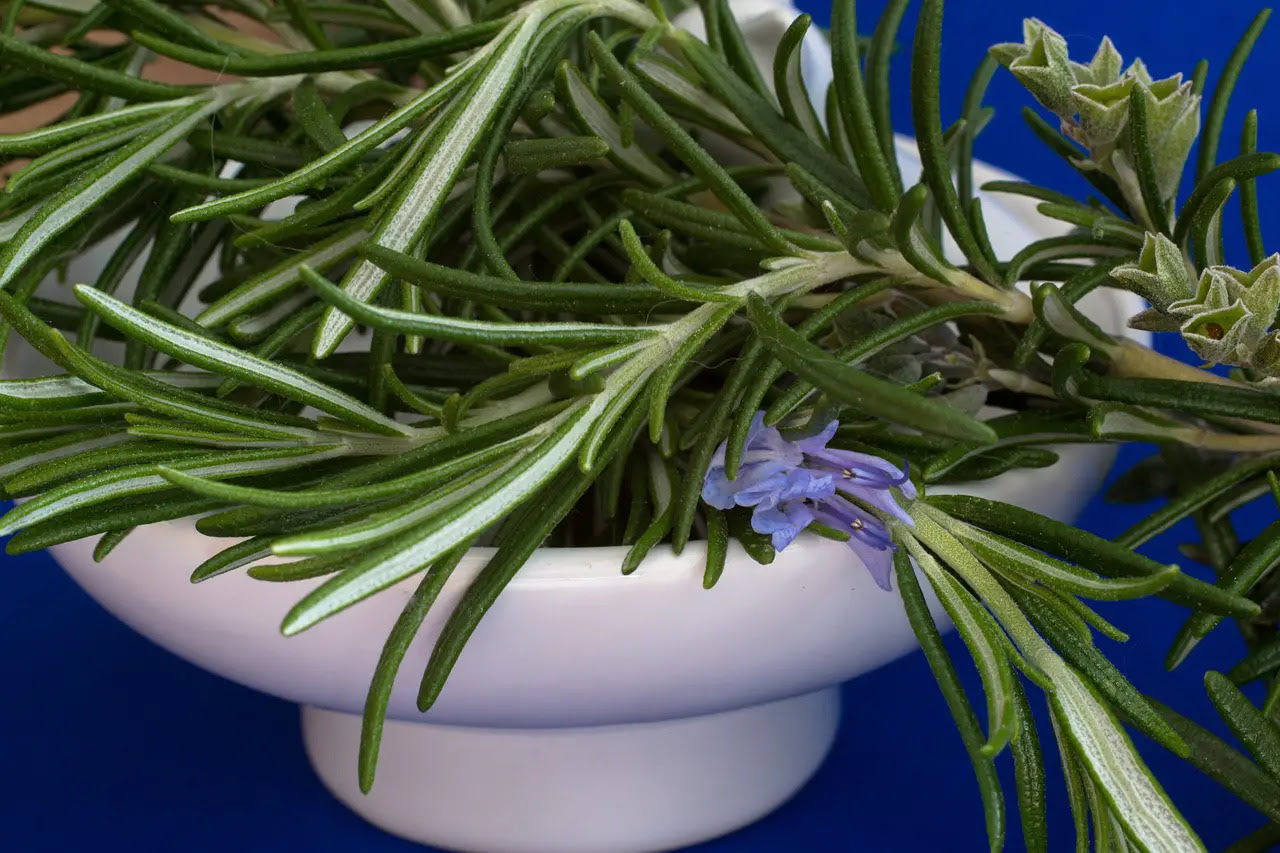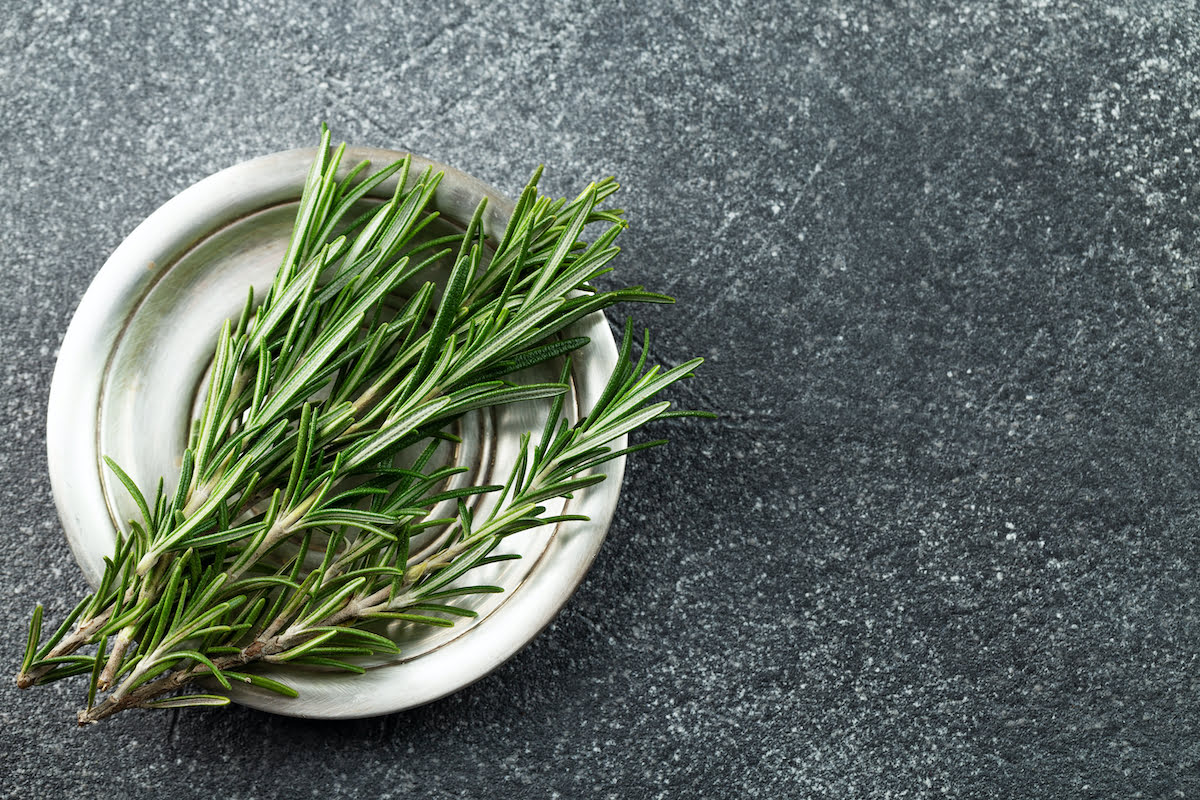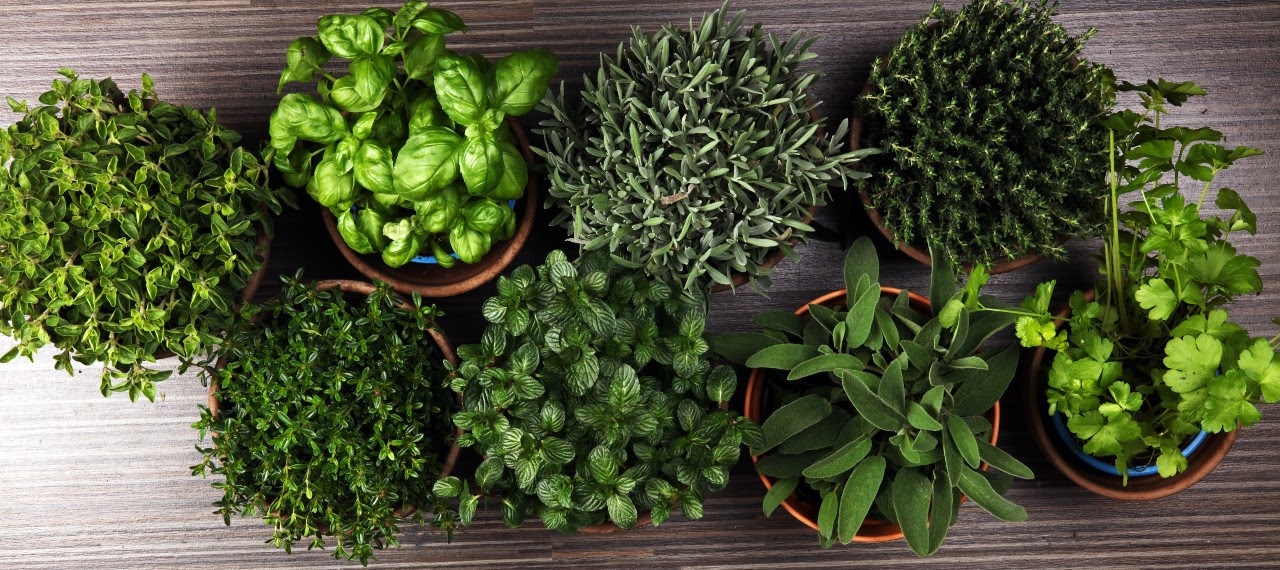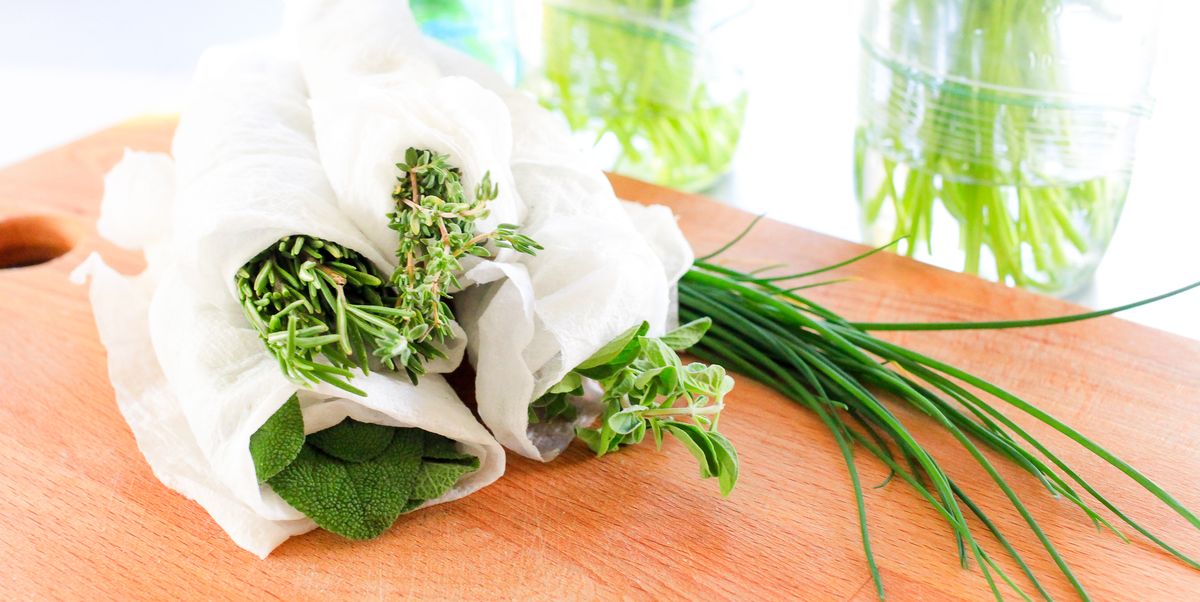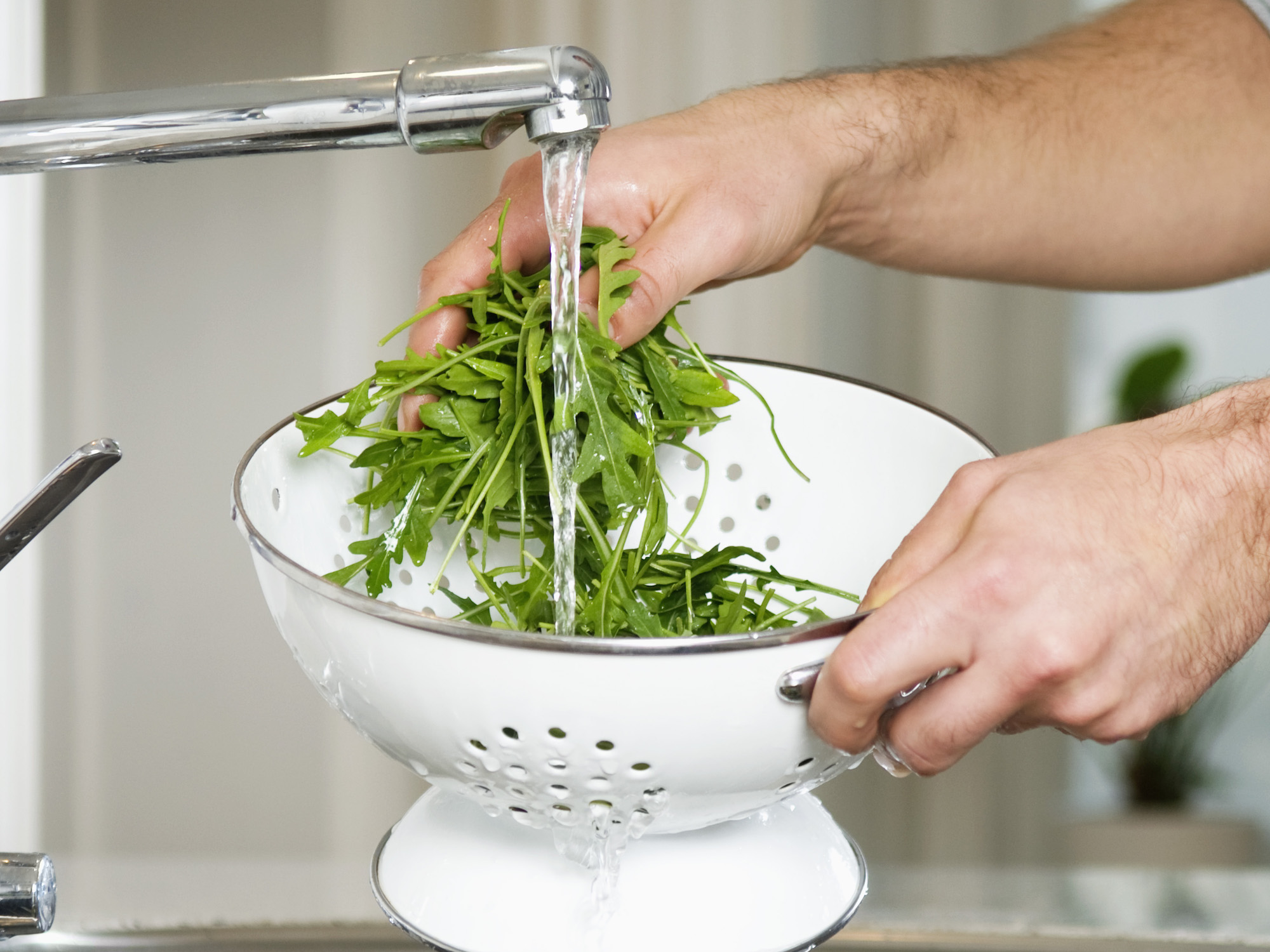Home>Gardening Techniques>DIY Projects>How To Keep Fresh Rosemary


DIY Projects
How To Keep Fresh Rosemary
Published: January 28, 2024
Discover how to keep fresh rosemary with these DIY projects, ensuring you have a continuous supply of this aromatic herb for your culinary delights.
(Many of the links in this article redirect to a specific reviewed product. Your purchase of these products through affiliate links helps to generate commission for Chicagolandgardening.com, at no extra cost. Learn more)
Table of Contents
Introduction
Fresh rosemary is a versatile herb that adds a delightful aroma and flavor to a variety of dishes. Whether you grow rosemary in your garden or purchase it from the grocery store, knowing how to properly store and keep it fresh is essential to maximize its shelf life.
In this article, we will guide you through the process of keeping fresh rosemary in prime condition for as long as possible. From understanding the characteristics of fresh rosemary to proper storage techniques and preservation methods, we will provide you with valuable tips and tricks to ensure your rosemary stays fresh and fragrant.
Whether you plan to use rosemary in a savory dish, infuse it in oils or vinegars, or simply enjoy its aromatic presence, this guide will help you preserve its quality and prolong its usability. With the right knowledge and techniques, you can savor the flavors and benefits of fresh rosemary for an extended period.
So, let’s dive into the world of fresh rosemary and discover the secrets to keeping it fresh and vibrant.
Understanding Fresh Rosemary
Rosemary is an evergreen herb that belongs to the mint family, known for its distinct woody aroma and pine-like flavor. It is commonly used in Mediterranean cuisine and adds a delightful taste to a range of dishes, including roasted meats, soups, stews, and marinades.
When choosing fresh rosemary, look for vibrant green leaves that are firm and aromatic. Avoid any limp or discolored sprigs, as these indicate that the herb is past its prime. Freshly harvested rosemary will have a strong fragrance, so take a moment to inhale its refreshing scent before making your selection.
It is essential to note that fresh rosemary has a shorter shelf life compared to dried rosemary. However, with proper storage and care, you can extend its usability and keep it fresh for longer.
The key to maintaining the quality of fresh rosemary lies in understanding its moisture requirements. Rosemary prefers a slightly humid environment, but excessive moisture can cause it to wilt and decay. By striking the right balance, you can ensure that your rosemary stays fresh and flavorful for an extended period.
In the next sections, we will discuss the proper storage, washing, drying, and freezing techniques to preserve the freshness of rosemary. These methods will not only help you keep your rosemary in excellent condition but also ensure that you have a ready supply of this aromatic herb on hand whenever you need it.
Proper Storage of Fresh Rosemary
Proper storage is key to maintaining the freshness and flavor of fresh rosemary. Follow these guidelines to keep your rosemary in optimal condition:
- Remove any packaging or rubber bands from the rosemary sprigs. It is best to keep the leaves intact on the stem to retain their freshness.
- If the rosemary sprigs are wet after washing, gently pat them dry with a paper towel to remove any excess moisture. Too much moisture can lead to mold or rot.
- Place the rosemary sprigs in a clean, dry glass or container. Alternatively, you can wrap the sprigs loosely in a damp paper towel and place them in a plastic bag with holes for air circulation.
- Store the rosemary in the refrigerator, preferably in the crisper drawer. The cool, slightly humid environment will help maintain the freshness of the herb.
- Ensure that the rosemary is not in direct contact with other strongly scented foods, as it can absorb their odors and flavors.
- Check the rosemary regularly for any signs of wilting or decay. Remove any discolored or damaged leaves promptly to prevent them from affecting the rest of the herb.
- For longer-term storage, you can also freeze fresh rosemary. We will discuss this in detail in the next section.
By following these storage guidelines, you can keep fresh rosemary fresh and flavorful for up to a week. However, keep in mind that the herb is best used within a few days of harvesting or purchase to enjoy its maximum potency.
Washing Fresh Rosemary
Before using fresh rosemary, it is essential to wash it thoroughly to remove any dirt, debris, or pesticides. Follow these steps to wash fresh rosemary:
- Gently rinse the rosemary sprigs under cool running water to remove any loose dirt or particles.
- For heavily soiled sprigs, fill a bowl with cool water and add a teaspoon of salt or vinegar. Swirl the rosemary in the water to help dislodge any stubborn debris.
- Rinse the rosemary again under running water to ensure all the salt or vinegar is removed.
- Gently shake off any excess water and pat the rosemary dry with a paper towel. It is important to remove as much moisture as possible to prevent the herb from wilting or becoming soggy.
Remember to handle the rosemary with care while washing to avoid bruising or damaging the leaves. Additionally, be mindful not to over-handle the sprigs, as excessive touching can cause them to bruise and release their aromatic oils prematurely.
Once the rosemary is clean and dry, you can proceed to use it in your desired recipes or prepare it for storage using the proper techniques discussed earlier.
By washing fresh rosemary before using it, you ensure that any contaminants are removed, allowing you to fully enjoy the herb’s flavors and aromas in your dishes.
Drying Fresh Rosemary
Drying fresh rosemary is an excellent way to preserve its flavor and extend its shelf life. Here are two methods for drying fresh rosemary:
- Air Drying: This traditional method is simple and requires minimal equipment. Follow these steps to air dry fresh rosemary:
- Bundle the rosemary sprigs together and tie them at the base with a string or a rubber band.
- Hang the rosemary bundle upside down in a well-ventilated area away from direct sunlight. This could be in your kitchen, pantry, or a dry room.
- Allow the rosemary to air dry for about 1-2 weeks until the leaves become brittle and crumble easily when touched.
- Once fully dried, remove the leaves from the stems and store them in an airtight container in a cool, dark place.
- Oven Drying: If you need to dry rosemary quickly, you can use the oven method. Here’s how:
- Preheat your oven to the lowest setting, usually around 200°F (93°C).
- Line a baking sheet with parchment paper and spread the rosemary sprigs evenly on the sheet.
- Place the baking sheet in the oven and prop the door slightly open to allow moisture to escape.
- Leave the rosemary in the oven for about 1-2 hours or until the leaves are completely dry and crumbly.
- Remove the dried rosemary from the oven, let it cool, and then store it in an airtight container.
Dried rosemary can be used in a variety of dishes, such as soups, stews, marinades, and spice blends. The drying process concentrates the flavors of the herb, making it a convenient and versatile option for adding a savory twist to your culinary creations.
Remember to label your dried rosemary containers with the date of drying to keep track of its freshness. Properly stored dried rosemary can last for several months, but it is best to use it within a year for the optimum flavor experience.
Freezing Fresh Rosemary
Freezing is an effective method for preserving the freshness and flavor of fresh rosemary, allowing you to have a ready supply of this aromatic herb whenever you need it. Here’s how you can freeze fresh rosemary:
- Whole Sprigs:
- Start by washing and drying the rosemary sprigs thoroughly.
- Place the sprigs in a single layer on a baking sheet lined with parchment paper.
- Put the baking sheet in the freezer and allow the rosemary to freeze completely.
- Once frozen, transfer the sprigs to a freezer bag or an airtight container.
- Label the container with the date and store it in the freezer for up to 6 months.
- Chopped Leaves:
- Wash and dry the rosemary sprigs, removing the leaves from the stems.
- Finely chop the rosemary leaves using a sharp knife or a food processor.
- Place the chopped rosemary into ice cube trays, filling each compartment about halfway.
- Top off each compartment with olive oil or water to help preserve the color and prevent freezer burn.
- Freeze the trays until the rosemary is solid, then transfer the frozen cubes to freezer bags or containers.
- Label the container with the date and store it in the freezer for up to 6 months.
When you’re ready to use frozen rosemary, simply remove the desired amount from the freezer and thaw it. While frozen rosemary is not suitable for garnishing or as a fresh herb, it works well in cooked dishes, marinades, and sauces.
Freezing fresh rosemary allows you to preserve its flavor and aroma, ensuring that you always have this versatile herb on hand, even during the off-season or when it’s not readily available.
Tips for Keeping Fresh Rosemary
Keeping fresh rosemary in optimal condition requires a little extra care and attention. Here are some tips to help you extend the life of your rosemary:
- Harvest or purchase fresh rosemary when you are ready to use it. The herb’s flavor and aroma are most potent when it is fresh.
- Store rosemary in the refrigerator, preferably in the crisper drawer, to maintain its freshness. Avoid storing it in the door as the temperature fluctuates more there.
- Do not wash fresh rosemary until you are ready to use it. Excess moisture can cause the herb to wilt and decay quickly.
- Trim the stem ends of the rosemary sprigs before placing them in water. This helps the herb absorb water and stay fresher for longer.
- If you prefer to keep rosemary in water, treat it like a bouquet of flowers. Change the water every two to three days to prevent bacterial growth.
- Consider growing your own rosemary plant. Having a fresh supply of rosemary in your garden allows you to harvest it as needed, ensuring the highest quality and flavor.
- Use your fresh rosemary regularly to enjoy its full flavors. The more you use it, the less likely it is to go to waste.
- Experiment with using rosemary in different recipes and cooking methods. Roasting, grilling, or steeping it in oils or vinegars can bring out its unique flavors.
- If you have an abundance of fresh rosemary, consider drying or freezing some of it for future use. This way, you can enjoy the herb’s flavors even when it’s out of season.
- Dispose of any rosemary that has become discolored, wilted, or has an off smell. It is best to use fresh rosemary while it is at its peak to fully experience its aroma and taste.
By implementing these tips, you can ensure that your fresh rosemary stays vibrant, fragrant, and ready to elevate your culinary creations.
Conclusion
Fresh rosemary is a delightful herb that adds a burst of flavor and aroma to various dishes. By understanding how to properly handle and store fresh rosemary, you can extend its shelf life and enjoy its benefits for longer periods.
Proper storage of fresh rosemary involves removing packaging, gently washing and drying the sprigs, and storing them in a cool, dry place in the refrigerator. Alternatively, you can freeze fresh rosemary for future use.
When washing fresh rosemary, be gentle to avoid bruising the leaves, and always ensure they are dry before storage or use. Drying rosemary can enhance its flavors and allow for longer preservation, using methods like air drying or oven drying.
Freezing fresh rosemary is another excellent option, which allows you to have a supply of this aromatic herb readily available, even when it’s out of season.
Lastly, consider incorporating some handy tips, such as harvesting or purchasing rosemary when needed, trimming the stem ends, and using it regularly to fully appreciate its flavors and aromas. Growing your own rosemary plant can also provide a convenient and fresh source of this herb.
With these insights and techniques, you can savor the taste and aroma of fresh rosemary in your culinary creations, adding a touch of sophistication and depth to your dishes. So go ahead, stock up on fresh rosemary, and elevate your cooking to new heights!
